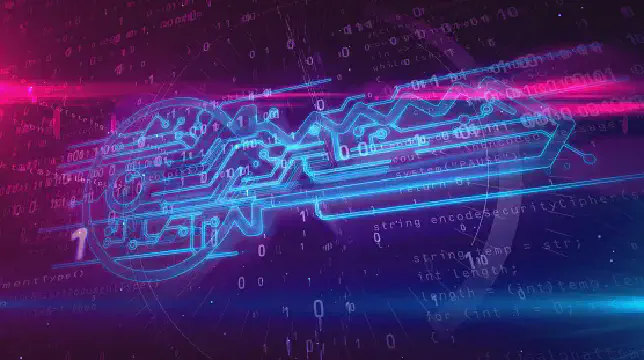Excerpt§
In this blog post, we delve into the security of SHA1 algorithm, discussing its vulnerabilities, known attacks, and the need for transitioning to more secure hash functions. We also provide recommendations for using SHA1 in specific situations and emphasize the importance of staying updated with cryptographic advancements.
Introduction to cryptography§
Cryptography is the science of securing information. It converts readable data (plaintext) into encrypted data (ciphertext) that looks meaningless to anyone except the intended recipient. Cryptography plays a vital role in today’s digital world as it protects sensitive information like passwords, financial data, emails, etc. from unauthorized access.
Some common applications of cryptography include:
- Encrypting data in transit and storage
- User authentication and access controls
- Protecting data integrity
- Digital signatures
Cryptographic algorithms use keys to encrypt and decrypt data. The security of these algorithms depends on keeping the keys secret.
Overview of SHA1§
SHA1 (Secure Hash Algorithm 1) is a cryptographic hash function published by the NSA in 1995.
A cryptographic hash function is a mathematical algorithm that takes an input (e.g a text file) and converts it into a fixed size alphanumeric string called a hash value or digest.
SHA1 generates a 160-bit hash value. Some key properties of SHA1 are:
- Deterministic - Same input always gives the same output
- Non-reversible - Output cannot be converted back to the original input
- Collision resistant - Very difficult to find two inputs with same output
Due to these properties, SHA1 is used for:
- Generating digital fingerprints of data
- Data integrity verification
- Digital signatures
- Password storage
For example, GitHub uses SHA1 hashes to track changes in git repositories. SHA1 hashes are calculated for each commit and file.
Understanding the security of SHA1§
Vulnerabilities and weaknesses§
Research over the years has uncovered certain weaknesses in the SHA1 algorithm:
- Susceptible to length extension attacks
- Potential vulnerability to collisions
Collisions and implications§
A collision occurs when two different inputs generate the same hash output.
Collisions in SHA1 indicate that it is not fully collision-resistant. This means SHA1 is weaker in theory than expected.
However, finding SHA1 collisions requires huge computational effort beyond practical feasibility today. But this could change with advances in technology like quantum computing.
Collisions weaken the reliability of SHA1 for:
- Digital signatures - A signature could be forged for another document with the same hash
- Password storage - Two passwords can produce the same stored hash
- Data integrity - Manipulated data can have same hash as original
Known attacks§
Some known attacks have demonstrated that collisions are possible in SHA1:
- In 2005, collisions were theoretically shown using 269 operations
- In 2017, the SHAttered attack produced two PDF files with the same SHA1 hash
These attacks indicate that SHA1 is weaker than intended, so alternatives are recommended for security-critical applications.
Evolution of SHA1§
SHA1 is being transitioned to newer and more secure hash algorithms:
SHA2§
The SHA2 set of algorithms published in 2001 have hash lengths of 224, 256, 384 or 512 bits. They are substantially faster and more secure than SHA1.
SHA3§
SHA3 algorithms were introduced in 2015 to replace SHA2. They can generate hashes up to 512 bits and provide enhanced protection against collisions and length extension attacks.
Here is a comparison of SHA1 with the newer algorithms:
| Algorithm | Digest Size | Status |
|---|---|---|
| SHA1 | 160 bits | Deprecated |
| SHA2 (SHA-256) | 256 bits | Recommended |
| SHA3 (SHA3-256) | 256 bits | More secure, but less widely adopted currently |
The current state of SHA1§
SHA1 is considered acceptable for general non-security purposes. But most industry standards have deprecated SHA1 for applications requiring collision resistance like digital signatures and TLS certificates.
Government agencies like NIST also recommend switching to SHA2 or SHA3 for secure hash requirements. Major web browsers plan to stop accepting SHA1 TLS certificates as early as 2021.
The SHA1 hash is still commonly found in git version control repositories and for checksums of downloaded files. But alternatives are recommended where collision resistance is important.
Recommendations for using SHA1§
SHA1 provides basic protection against accidental data corruption. It can be safely used in these circumstances:
- As general file checksums
- For non-security related applications like git commits
- Where collision resistance is not important
However, SHA1 should be avoided where collisions could compromise security such as:
- Digital signatures - Use SHA2-256 or above
- Password storage - Use Argon2, scrypt or bcrypt
- Applications involving digital certificates or TLS - Migrate to SHA2 or SHA3
Conclusion§
SHA1 served an important role in cryptography for many years. But research exposed weaknesses in its collision resistance. Newer algorithms like SHA2 and SHA3 provide better security with reduced vulnerabilities to collisions and related attacks.
For most common applications today, the risk of a malicious SHA1 collision is negligible. But software developers should aim to replace SHA1 usage over time as part of a defense-in-depth strategy.
There are also efforts underway to remove support for SHA1 certificates in web browsers by 2021. Overall, the industry is moving towards more robust cryptographic hashes like SHA2-256 for critical security functions.
It is hard to predict how long SHA1 can safely be used for non-critical purposes. But software developers should remain aware of cryptographic advancements to transition away from SHA1 in a timely manner.















